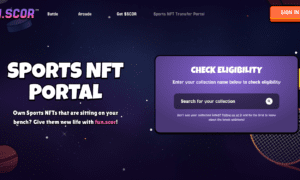In the rapidly evolving digital landscape, have you ever wondered what fuels the success of today’s top-performing mobile applications? If we wish to solve this mystery, we’ll need to venture through the world of mobile app analytics. It’s a powerful instrument that can decode user behaviors, preferences, and app performance, providing invaluable insights to drive continuous improvement.
Picture this: in the bustling world of 2023, close to 7.5 billion people from every corner of the world use mobile devices, and a typical individual peeks at their phone screen at least 60 times a day. In the face of such staggering figures, it’s beyond doubt that mobile apps have stealthily but surely entrenched themselves into our day-to-day lives. But how is it that app builders are able to not only see eye to eye with user expectations but in some cases are also able to exceed them? This is exactly where mobile app analytics shines.
A keener look at the trends in app usage, user interactions with various features, and performance analytics provide app builders and businesses the leverage to tweak and tailor their apps, optimizing them for top-notch user experience and peak performance. In essence, mobile app analytics turn raw data into actionable insights, propelling apps from good to great. Make sure you stick with us as we remove the layers of this fascinating topic.
What is Mobile App Analytics?
Ever stopped to think why some apps become our daily companions, almost like a Swiss army knife, while others just fade away into oblivion in the vast ocean of applications? In order to achieve it we must venture into the realm of mobile app analytics, but ever wondered what exactly is it?
Mobile app analytics refers to the structured analysis and measurement of data produced by mobile applications. It includes user engagement metrics, in-app behaviors, performance indicators, and more. The process, heavily reliant on data, aids developers and businesses in not just keeping tabs on but also gaining a deeper understanding of their app’s performance. It’s this understanding that allows them to enhance their apps and take the user experience to another level.
In the dynamic landscape of our tech-dominated times, user expectations are soaring, and competition is at its peak. This is exactly the moment where mobile app analytics can shine, changing the pre-existing norms.
App builders and businesses are using these insights to not just react to user behavior, but also predict and shape it. With this, they can fashion personalized experiences that truly resonate with users, fostering loyalty and paving the way for sustainable success.
Here’s what sets mobile app analytics apart: it transforms a complex matrix of data points into a roadmap for continuous app refinement. As we journey further into this article, we’ll take a more intimate look at the multitude of elements of mobile app analytics and their tangible impacts.
Key Metrics in Mobile App Analytics
The lifeblood of mobile app analytics lies in the collection and interpretation of key metrics. You may find yourself pondering what are these crucial metrics and why do they have such profound influence over an app’s fortune. Let’s scratch beneath the surface and explore some of them:
Daily Active Users (DAUs: This, for instance, shows the count of unique users who use your app daily. It’s a clear indicator of your app’s level of engagement. A higher number of DAUs signifies strong user engagement.
Session Length: This measures the duration of a user’s interaction with the app, from opening to closing it. Longer sessions may indicate higher user interest and engagement.
Retention Rate: This measures the ratio of users who revisit your app following their initial encounter. High conversion rates point to a captivating user experience that keeps users returning.
Churn Rate: This rate represents the opposite of the retention rate – it tells about the percentage of users who for some reason stop using your app over a certain period. A high churn rate may signal dissatisfaction and needs immediate attention.
Let’s uncover the answers together in the next sections! In its early days, Snapchat closely monitored its DAUs and retention rates. They noticed that users who added friends within the first week of download had a much higher retention rate. Based on this insight, they redesigned their onboarding process to encourage new users to add friends. The result? A significant increase in their user retention rate.
This example speaks of why mobile app analytics is so important. It’s not just about gathering data but using those insights to inform decisions and drive improvements. As we journey further, we’ll unveil the methods of harnessing these metrics effectively. Stay tuned!
Tools for Mobile App Analytics
Having grasped the importance of key metrics in mobile app analytics, the next logical step is to identify the tools that can aid us in gathering and deciphering these metrics. There are several robust platforms available in the market, each with its unique strengths and considerations. Let us shed light on a few of the top players.
Google Analytics for Mobile: This tool offers a comprehensive suite of features for tracking user interactions and behaviors within your app. It’s robust, customizable, and integrates well with other Google products. However, the intricacy of Google Analytics may pose a sharp learning curve for beginners.
Flurry: Flurry is a free tool from Yahoo that provides insights into user demographics, session details, and device information. It stands out for its real-time metrics and user acquisition analytics. On the downside, its user interface can be complex to navigate for newcomers.
Mixpanel: Mixpanel excels in event-based analytics, allowing you to monitor specific actions users take within your app. It also provides a unique feature called “funnel analysis” to track user journey. However, Mixpanel’s detailed features come with a relatively higher price tag than other tools.
In conclusion, each tool offers unique benefits and potential drawbacks. Your choice of an analytics tool will therefore hinge greatly on your distinct needs, financial constraints, and technical acumen. Do you need real-time insights? Or is your focus more on user journey mapping? All you need is to answer these questions, and here you are, all suited and booted for your mobile app analytics journey.
In the upcoming section, we’ll dissect the ways to exploit these tools and glean insights for the upliftment of your mobile application. Don’t miss it!
Leveraging Analytics for Optimal Performance
So, you’ve gathered mountains of data using your analytics tool of choice. Now comes the crucial part – leveraging these insights to enhance your app’s performance. Let’s delve into a handful of tactics that have repeatedly shown their worth.
A/B Testing: It is a type of testing with the aim of identifying the version that performs better when two versions of the same feature are compared side by side. Through the lens of analytics, you can gauge the influence of each variant on facets like user engagement, retention, and other vital metrics.
User Segmentation: Here’s where analytics comes to your aid, allowing you to group users based on their actions, preferences, and demographic profiles. This information is invaluable in tailoring user experiences and marketing campaigns.
Personalization: Once you’ve segmented your users, you can provide personalized experiences. This could range from recommended products to customized app interfaces, all based on user data.
Consider Spotify, a popular music streaming app. Spotify collects data on user listening habits and uses it to create personalized playlists, such as “Discover Weekly” and “Daily Mix.” This extent of personalization has been a key ingredient in the recipe for Spotify’s success, leading to users spending longer hours in the app and expressing high levels of satisfaction.
This use case sheds light on the transformative power of mobile app analytics. Armed with the apt toolkit and strategies, analytics can turn the tables on app performance and user satisfaction. Stay aware of emerging capabilities in analytics, and continuously explore innovative strategies to stay ahead in the game. Up next, we discuss the future trends in mobile app analytics. Stay tuned!
Challenges and Future of Mobile App Analytics
Like any technological domain, mobile app analytics does come with its share of challenges. As time goes on, the understanding of users about their data rights keeps on growing which makes them ask questions about their privacy, which makes data privacy concerns very important for us. Balancing data collection with privacy compliance is a fine line that businesses need to tread carefully. Additionally, integrating data from various sources into a cohesive, actionable format can pose significant technical hurdles.
But with challenges come opportunities. As we look to the future, mobile app analytics is set to become more advanced and insightful. Advances in machine learning and artificial intelligence promise predictive analytics, where app behaviors can be forecasted to make proactive improvements. In our tech-saturated world, the swift and expansive emergence of some phenomena cannot be ignored, Internet of Things is one such example. As it grows, the fusion of app analytics with data from various devices could offer user insights like never before.
The horizon of mobile app analytics holds immense potential. Even with the challenges that come our way, the capacity to comprehend and uplift the user experience will remain a cornerstone in the mobile app industry. Keep exploring, keep innovating, and watch this space for more!
Conclusion
Summing it up we can conclude that, mobile app analytics is a great tool that decodes user behavior, preferences, and app performance. By tracking key metrics, using the right analytics tools, and implementing strategic actions like A/B testing and personalization, we can significantly enhance app performance. Despite challenges like privacy concerns and data integration, the future of mobile app analytics looks promising, with advancements like predictive analytics and IoT integration on the horizon.



































